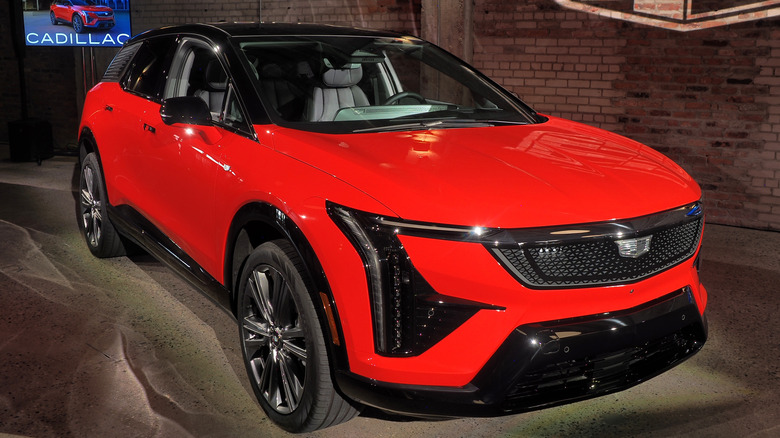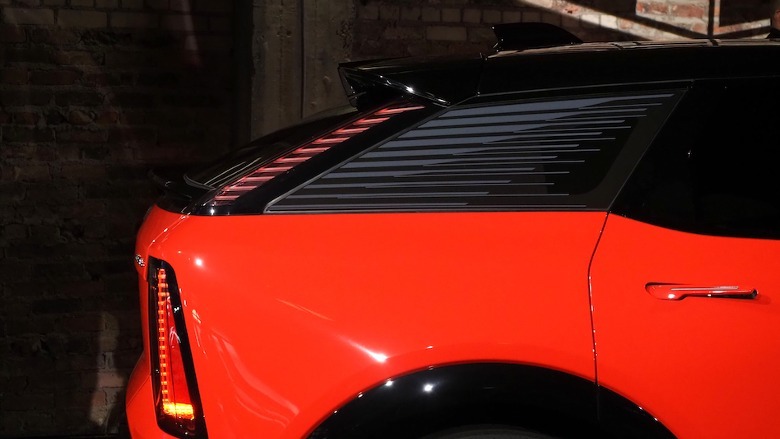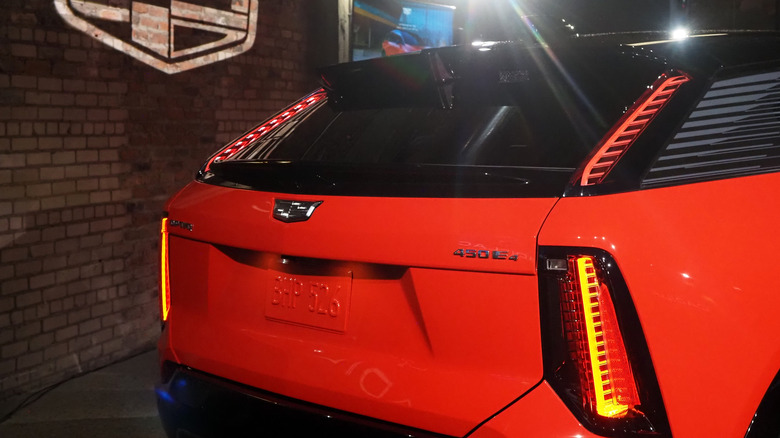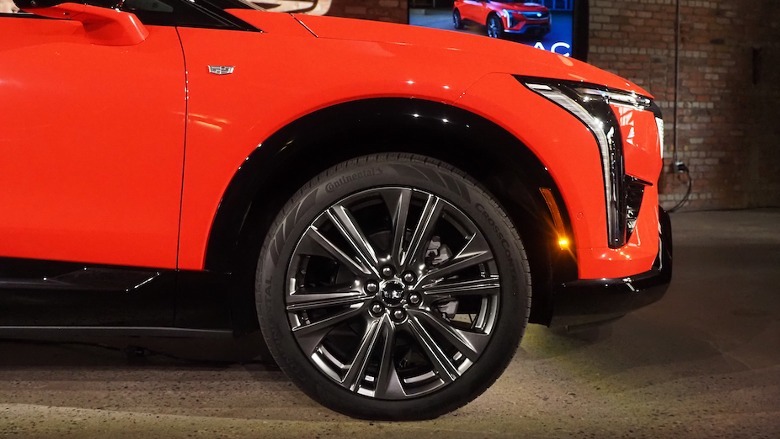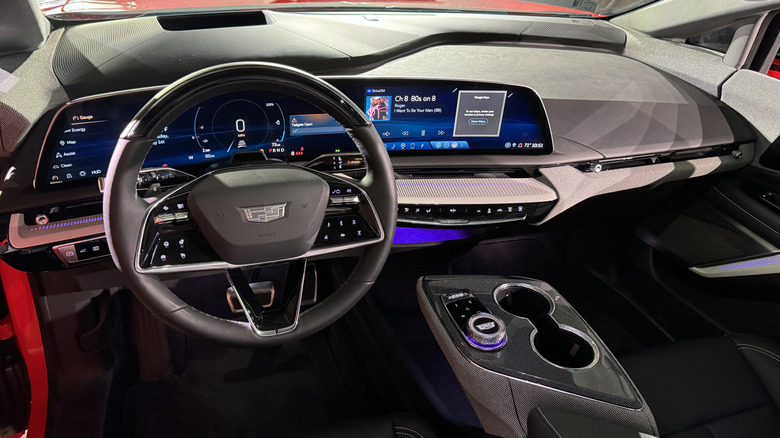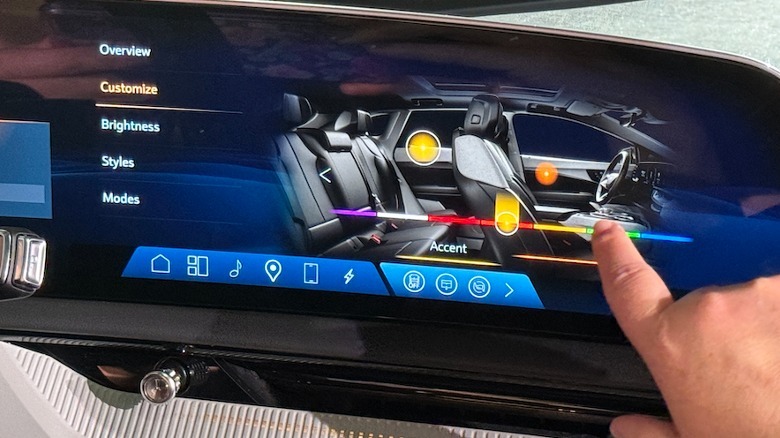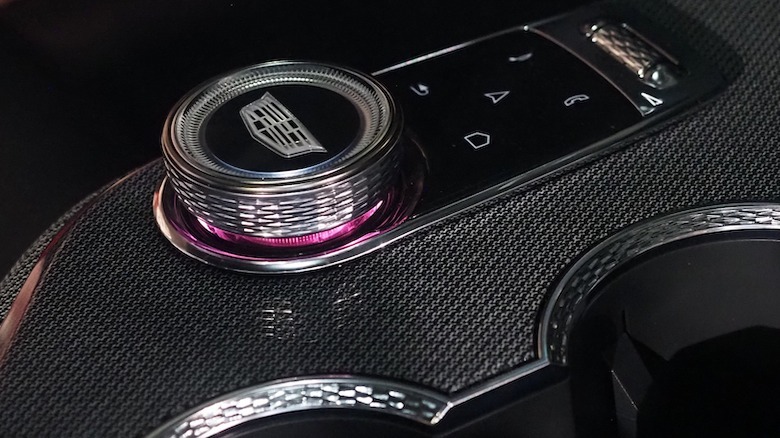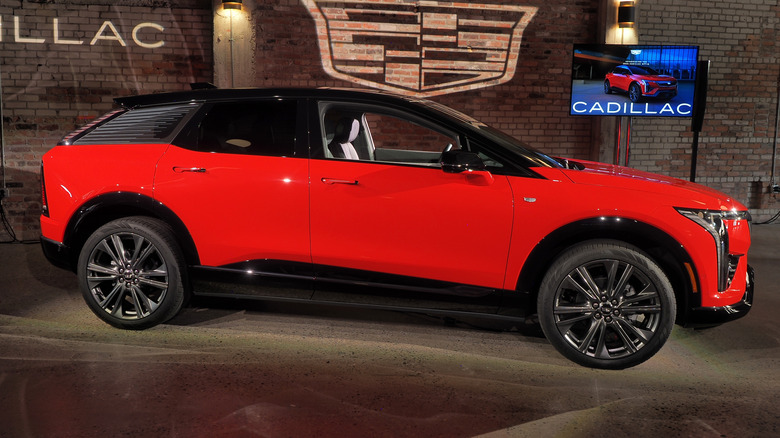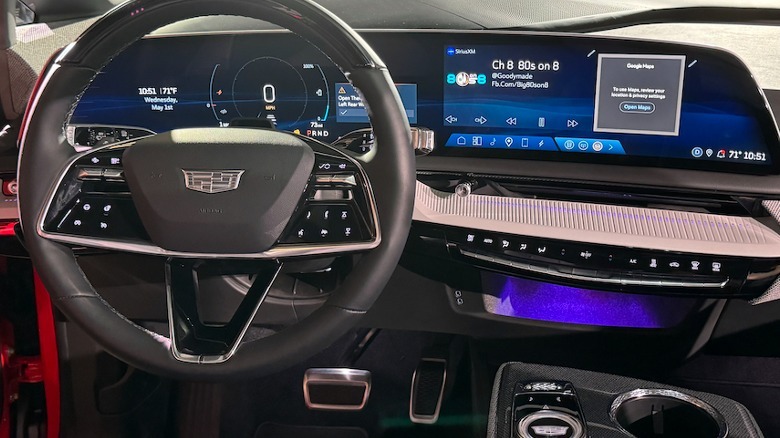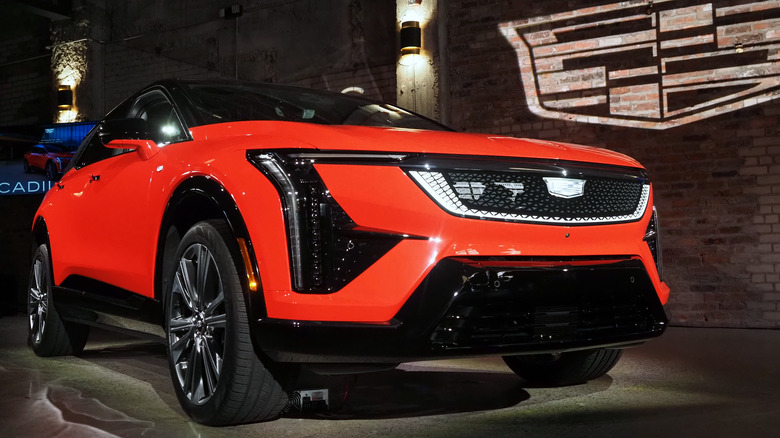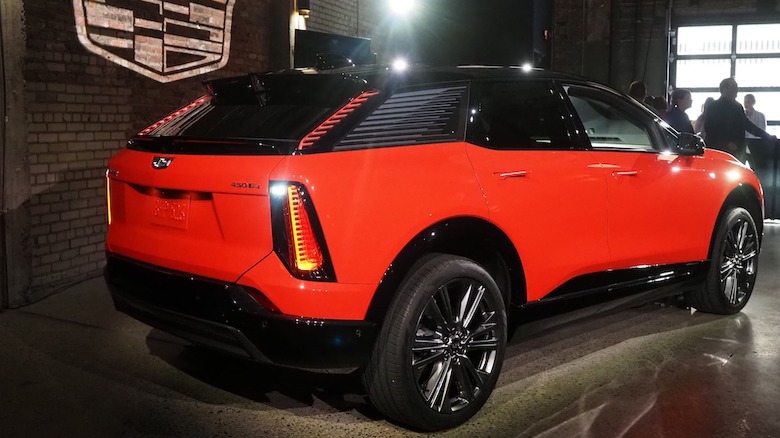2025 Cadillac Optiq EV First Look: Price, Range, And Surprises Good And Bad
Cadillac's electric vehicle lineup is getting a new, entry-level model, but while the 2025 Optiq may be smaller, the automaker has big ambitions for it. Set to arrive in the U.S. later in 2024, Optiq slots in under the existing Lyriq EV with the promise of 300 miles of estimated driving range, along with a lower price tag. SlashGear got an up-close look ahead of time to see how the new EV is shaping up.
While the familiar resemblance is clear, the Optiq feels significantly smaller in the metal. It's 5 inches shorter than Lyriq, though slightly longer than a Cadillac XT5; the automaker says it intentionally straddled small SUV segments, so as to appeal to a broader audience. Visually, the Optiq's proportions are less dramatic — and probably less divisive — than those of Lyriq, too.
The laser-etched black crystal grille is smaller, though still gets a dynamic lighting signature which animates (in fact, the vertical LED bars resemble trickling icicles, almost like the Optiq is crying) when you approach or leave the EV. More etched glass is used in the rear quarter panel, though the back end of the Optiq is about as steeply inclined as the Lyriq's trunk.
Starting with the high spec
Based on the GM Ultium platform, like the Lyriq and upcoming Escalade IQ, the initial Optiq configuration will have dual motors good for an estimated 300 horsepower and 354 pound-feet of torque. The 10 module, 85 kWh battery supports up to 79 miles of range added in 10 minutes on a suitably-potent DC fast charger, Cadillac says. In addition to one-pedal driving — which can bring the Optiq to a full stop — there's a pressure-sensitive steering wheel paddle for controlling regenerative braking on demand.
Though it may be the entry point into the automaker's EV lineup, Cadillac will still be launching the 2025 Optiq in a well-equipped form. Priced from around $54,000 including destination, the 450E4 will be all-wheel drive as standard, with a tow rating of up to 1,500 pounds. While the 2024 Lyriq starts not far off that, from $58,590, that's for a single-motor version — a dual-motor Lyriq starts from $62,090.
There'll be two Optiq trims — Sport and Luxury — though each will have a relatively high level of standard equipment. That'll include GM's Super Cruise as standard (with three years of connected service), the hands-off driver assistance system with lane-changing, plus an AKG audio system with Dolby Atmos support and 19 speakers. A fixed glass roof is also standard, together with enhanced automatic parking, blind spot steering assistance, and forward collision alerts.
A divisive dashboard that lacks smartphone projection
The dashboard gets a 33-inch diagonal LED display, that Cadillac says is a whopping 9k resolution. The Optiq's infotainment is based on Google built-in, with Google Maps and the Google Assistant for voice control. However, unlike in the Lyriq, the Optiq lacks support for smartphone projection including Apple CarPlay and Android Auto. It's probably going to be one of the most contentious aspects of the new electric car.
Cadillac's argument is that smartphone projection simply doesn't deliver the full, consistent media and navigation experience that drivers expect now. Running apps locally, the automaker insists, allows for better integration with the EV's underlying systems, such as factoring in battery levels and power consumption into mapping. Media from a projection-connected phone can't tap into the Atmos surround sound support either, meanwhile.
Though that may be the case, potential Optiq buyers may not agree with Cadillac's conclusions. After all, though there are native apps for things like Spotify in the vehicle, not every media service can currently be run on the EV's infotainment system. Reverting to Bluetooth streaming from a phone will undoubtedly feel like a step backward. The fact that GM isn't applying this new projection policy ubiquitously across its new vehicles — ICE models will still support CarPlay and Android Auto, for now — also suggests the automaker isn't entirely convinced by its own arguments.
Optiq is almost as practical as Lyriq
It's a shame, because generally, the Optiq's cabin feels polished and a genuine step up from much of Cadillac's existing range. The fact that it closely resembles — in look and feel, albeit from a preproduction car — the interior of the Lyriq is no bad thing. Swathes of soft-touch materials including recycled fabrics cover the dashboard and upper door panels, and despite the outsized touchscreen, there are still physical controls for the climate controls and multimedia.
There'll be four drive modes — Tour, Sport, Snow/Ice, and a driver-customizable My Mode. Though you might not think of a Cadillac EV for off-roading, the Optiq also has 7.9 inches of ground clearance, which should be useful in snowy winter conditions. 20-inch wheels are standard, with 21-inch versions as an option. Don't expect trick magnetic ride control suspension, however, with the Optiq using Passive-Plus Dampers that promise to adjust their stiffness automatically depending on driving conditions.
There's 26 cubic-feet of trunk space, which expands to 57 cubic-feet with the rear bench folded. It's those back seats where the biggest difference from the Lyriq is felt: At 37.8 inches, there's almost two inches less legroom than in the bigger EV, but unexpectedly, an inch more headroom.
Cadillac is hoping to skip its earlier EV hurdles
That Cadillac hasn't strayed far from its Lyriq recipe with the 2025 Optiq is no great surprise. That bigger EV, the automaker says, is seeing a 70% conquest rate: buyers coming to Cadillac from ownership of rival brands. And, while there's no comment yet on possible other Optiq variants — such as a single-motor model — buying patterns for Lyriq models suggest that a dual-motor is a sensible place to start. Over 80% of buyers of Lyriq are apparently opting for all-wheel drive.
What hopefully won't be carried over are Cadillac's teething pains actually producing and delivering Lyriq models. The 2025 Optiq will be built in Mexico, with battery production done by GM in North America, and the automaker isn't expecting any of the bottleneck issues that impacted its first all-electric SUV. It also — assuming no changes in policy occur — says the Optiq should qualify for the full $7,500 U.S. federal tax incentive.
That's key, because just as much as a gateway to luxury electric ownership, Cadillac has an ambition to sell Optiq models as the second car to a household. If it can then move them to Lyriq, to the Vistiq three-row electric SUV launching in 2025, and then maybe to the big papa Escalade IQ, all the better. How compelling that'll be will depend on how well the Optiq drives, which we'll find out closer to production kicking off late in fall 2024.
